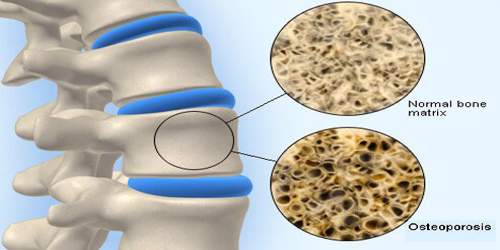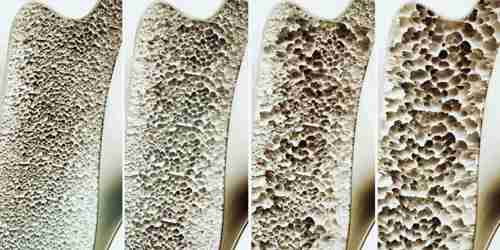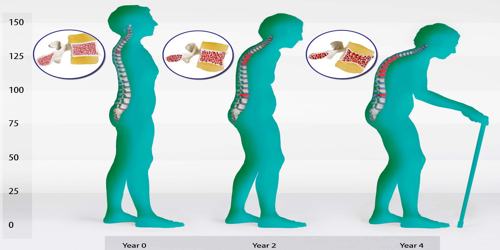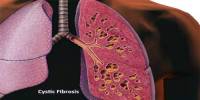Osteoporosis
Definition
Osteoporosis is a bone disease characterized by decrease in bone mass and density, resulting in a predisposition to fractures and bone deformities such as the collapse of one or more vertebrae. It occurs most commonly in women after menopause as a result of estrogen deficiency. Bones may weaken to such a degree that a break may occur with minor stress or spontaneously. Chronic pain and a decreased ability to carry out normal activities may occur following a broken bone.

Although all bones can be affected by the disease, the bones of the spine, hip, and wrist are most likely to break. In elderly people, hip fractures can be particularly dangerous because the prolonged immobility required during the healing process can lead to blood clots or pneumonia, both of which can have fatal consequences.
Risk factors for osteoporotic fracture can be split between nonmodifiable and (potentially) modifiable. In addition, osteoporosis is a recognized complication of specific diseases and disorders. Medication use is theoretically modifiable, although in many cases, the use of medication that increases osteoporosis risk may be unavoidable. Caffeine is not a risk factor for osteoporosis.
Prevention of osteoporosis includes a proper diet during childhood and efforts to avoid medications that cause the condition. Efforts to prevent broken bones in those with osteoporosis include a good diet, exercise, and fall prevention. Lifestyle changes such as stopping smoking and not drinking alcohol may help. Biphosphonate medications are useful in those with previous broken bones due to osteoporosis. In those with osteoporosis but no previous broken bones they are less effective. A number of other medications may also be useful.
Causes, Sign and Symptoms of Osteoporosis
The exact cause of osteoporosis is unknown; the process by which bone becomes porous is well understood. Early in life, bone is broken down and replaced continuously, a process known as bone remodeling. Bone mass usually peaks in a person’s mid to late 20s. Many other factors can also increase the risk of developing osteoporosis, including:

- long-term use of high-dose oral corticosteroids
- other medical conditions – such as inflammatory conditions, hormone-related conditions, or malabsorption problems
- a family history of osteoporosis – particularly history of a hip fracture in a parent
- long-term use of certain medications which can affect bone strength or hormone levels
- having a low body mass index (BMI)
- heavy drinking and smoking
Early in the course of the disease, osteoporosis may cause no symptoms. Later, it may cause height loss or dull pain in the bones or muscles, particularly low back pain or neck pain.
People with osteoporosis may not even recall a fall or other trauma that might cause a broken bone, such as in the spine or foot. Spinal compression fractures may result in loss of height with a stooped posture (called a dowager’s hump). Fractures at other sites, commonly the hip or bones of the wrist, usually result from a fall.

Diagnosis and Treatment of Osteoporosis
A routine X-ray can reveal osteoporosis of the bone because the bones appear much thinner and lighter than normal bones. Unfortunately, by the time X-rays can detect osteoporosis, at least 30% of the bone has already been lost. In addition, X-rays are not accurate indicators of bone density. Thus, the appearance of the bone on X-ray often is affected by variations in the degree of exposure of the X-ray film.
The goal of treatment of osteoporosis is the prevention of bone fractures by reducing bone loss or, preferably, by increasing bone density and strength. The following are osteoporosis treatment and prevention measures for optimal health of the bone:

- Lifestyle changes, including quitting cigarette smoking, curtailing excessive alcohol intake, exercising regularly, and consuming a balanced diet with adequate calcium and vitamin D
- Medications that stop bone loss and increase bone strength, such as alendronate (Fosamax), risedronate (Actonel), raloxifene (Evista), ibandronate (Boniva), calcitonin (Calcimar), zoledronate (Reclast), and denosumab (Prolia)
- Medications that increase bone formation such as teriparatide (Forteo)
Although osteoporosis patients have an increased mortality rate due to the complications of fracture, it is rarely lethal.
Reference:
















